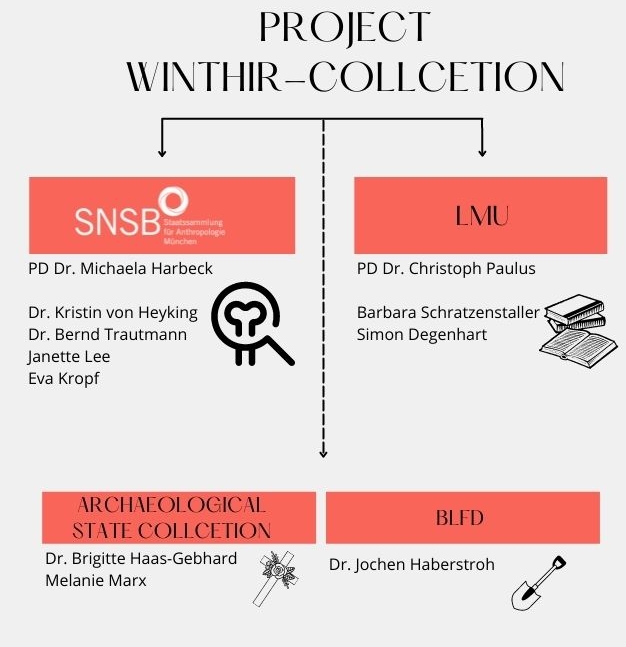The Winthir Collection
Development of a skeletal reference series
In 2014, a section of the Winthir cemetery in Munich last in use about 130 years ago was archaeologically excavated due to construction. The area under investigation is adjacent to the cemetery of the Catholic Filial Church of the Assumption of the Virgin Mary in the Neuhausen district, which is still in use today. The excavated area belongs to an eastern extension of the present cemetery, which was in use from 1876 to 1927 and covered about 800 square meters. The occupation phase thus falls predominantly into the Prinzregentenzeit (1886 – 1912), which was characterized by industrialization and urbanization. The excavation revealed the skeletal remains of almost 300 individuals, which are kept in the State Collection for Anthropology in Munich. The most unique, and for this study important feature of the Winthir cemetery is that burial records for the excavated section are available from the cemetery administration. Thus it was possible to collect historical data on 246 of the individuals buried there. A large portion of these are children and adolescents.
In an interdisciplinary project funded by the German Research Foundation (DFG), anthropologists, historians and archaeologists are working together to use this skeletal collective as a historical source for this period and to develop a new anthropological reference series, and make it internationally accessible.
Reference series with known individual data such as age and sex, which are essential in the field of method development as well as for the verification and specification of existing osteological methods, are urgently needed skeletal collectives in anthropology. In Central Europe there has been a notable lack of such skeletal collectives so far.
In the project the remains of all individuals will be examined morphologically in a standardized way according to the guidelines of the State Collection for Anthropology. Among other things, all special features and pathological changes will be described and photographically documented. So far, numerous pathological changes have been documented on the skeletal remains, such as fractures, different forms of bony deposits (“periostitis”) of various causes or mineralization disorders of the enamel.
In addition, intensive historical research is being conducted. Thus, for almost every individual, the date of occupancy, the age of the deceased and his occupation (in the case of women and children, the occupation of the father or husband), as well as cause of death, medical history or, in the case of women, the number of children born can is provided.
This information is expected to be published in catalog form in the series “Documenta Archaeobiologiae” in English in 2023


